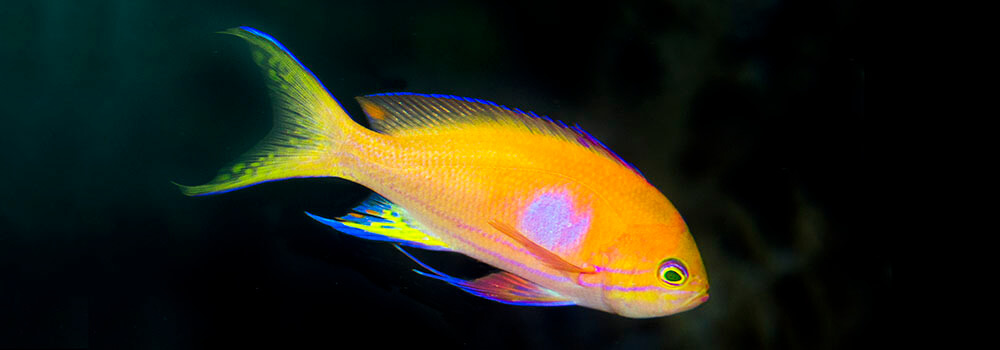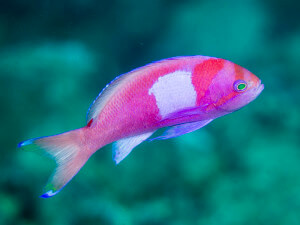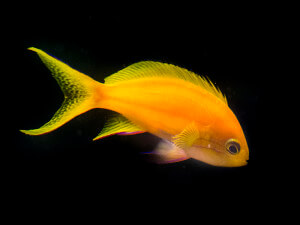
Sex-changing anthias
Harem groups usually consist of several females, their young (both male and female), and a single dominant male. Parrotfishes, wrasses, anemonefishes, and anthias form harem groups, but harems are not unique to reef fishes. Elephant seals, common pheasants, and several species of baboons also use this reproductive strategy. The single dominant male defends his group of females, and he may reproduce with one or several of his choosing. The advantages are for the females to reproduce with the strongest male and for the male to produce many offspring. The single largest disadvantage is that reproductive success for the females may be seriously jeopardized in the absence of the male. It is such a disadvantage that most families of reef fishes that practice this form of social behavior have evolved an interesting solution to the lack of a reproductive partner; the largest female will turn into a male and assume harem control and reproductive responsibilities.
This reproductive strategy, whereby an individual begins life as one sex and switches to the opposite sex at some point in their life, is called sequential hermaphroditism. In the case of females turning into males, it is called protandrous hermaphroditism, or protandry.Schools of anthias are usually made up of smaller male-dominated harem groups. The techno-colored males are easy to spot amongst the bright, but less-colored females. As protandrous hermaphrodites, all anthias are born female, and in the sudden absence of a male, the largest female will physically and biologically transform into a male. This transformation includes changing into the colors consistent with males and producing sperm. This process can take several weeks. During that time the female/male will begin to exert dominance over the harem group, especially with regards to discouraging other potential males—either from outside of their group, or adolescent males within the group trying to gain dominance—from assuming control. When the transformation is complete, he will take control of the group, defend them against rival males or predators, and begin courting females for reproduction.
To illustrate this, we look at the squarespot anthias (Pseudoanthias pleurotaenia). The male (below left) has a very distinctive squarish spot on his side. The female (below right) is bright yellow but with few obvious markings. The photo at the head of this page is a female transforming into the male. Note the male characteristics beginning to show, though the overall yellowish color is still that of the female.


